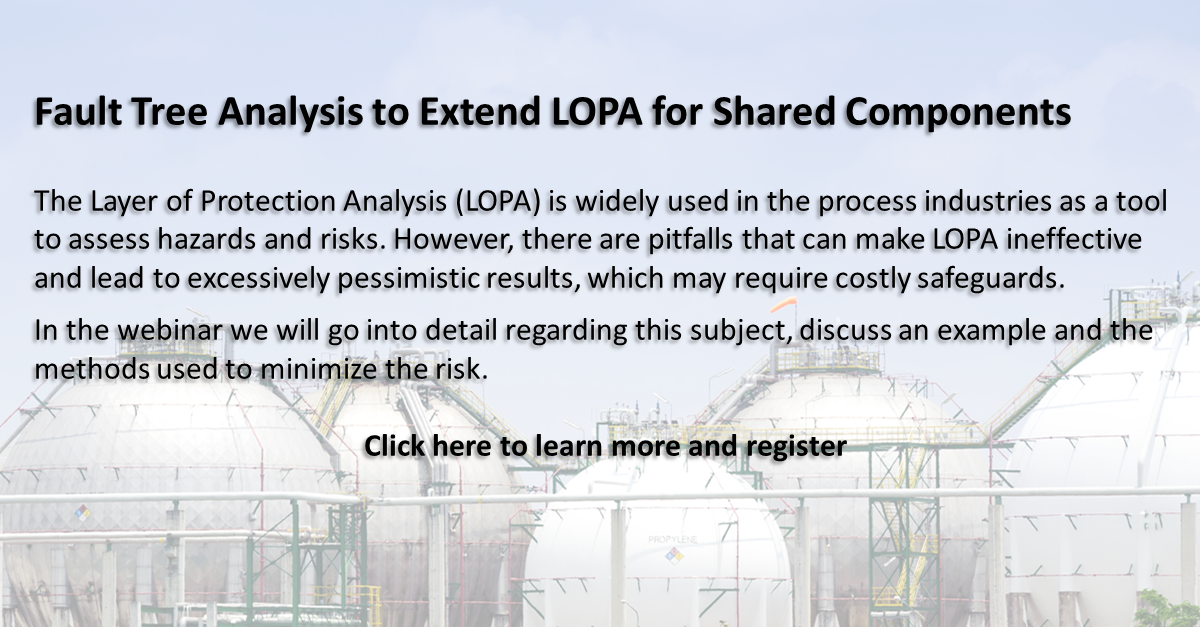The Layer of Protection Analysis (LOPA) is widely used in the process industries as a tool to assess hazards and risks. Typically, organizations in the chemical process industry employ a process hazards analysis (PHA) program, which begins with a facilitated workshop study, often using techniques like hazards and operability studies (HAZOP). This study triggers further analysis in certain situations, such as scenarios involving high consequences, complexity, quantitative performance targets for safeguards, very high-cost recommendations, or insufficient risk assessment. In such cases, additional analysis, often more comprehensive than the PHA, is necessary. LOPA is frequently chosen as the technique of choice, as it is more comprehensive than PHA but less resource-intensive than fully quantified risk analysis.
However, there are pitfalls that can make LOPA ineffective and lead to excessively pessimistic results, which may require costly safeguards. If LOPA presents inappropriate results, alternative quantitative tools should be considered to address its limitations. These tools need not be used to their fullest extent, but rather selectively applied to specific applications where LOPA is inadequate. Some of these quantitative tools include dispersion models, explosion models, consequence effects models, event tree analysis, quantitative bowtie analysis, and fault tree analysis.
Register for this recorded webinar at the bottom of the page.
Fault tree analysis, for example, is a more detailed approach to estimating the frequency of events, particularly loss of containment events in the process industries. Unlike LOPA, which only analyzes events that are logical “ANDs,” fault tree analysis can handle extremely complex logic. This capability can be leveraged to supplement LOPA studies that fail because the LOPA framework cannot model the complexity of the situation being analyzed.
To summarize, while LOPA is widely used, its inherent simplifications can sometimes lead to inaccurate risk calculations. This can result in poor recommendations, such as unnecessary equipment specification and increased costs for maintenance and testing over the entire lifecycle. In cases where LOPA produces results that seem unreasonable based on engineering judgement, it is important to investigate the root cause of excessive conservatism in the analysis. If the cause is due to LOPA’s inability to model the complexity of the situation or the use of shared components, consider using fault tree analysis to supplement the LOPA analysis for improved accuracy.
In the webinar we will go into detail regarding this subject and discuss a specific example of a butane storage sphere overfill scenario. In this scenario a single set of level transmitters are used for basic process control, alarm, and safety. Making determination of achievement of tolerable risk more complex than can be handled by LOPA alone.
REGISTER FOR THIS WEBINAR BELOW
Fault Tree Analysis to Extend LOPA for Shared Components
The Layer of Protection Analysis (LOPA) is widely used in the process industries as a tool to assess hazards and risks. However, there are pitfalls that can make LOPA ineffective and lead to excessively pessimistic results, which may require costly safeguards. In the webinar we will go into detail regarding this subject, discuss an example and the methods used to minimize the risk.

